|
BGP
Address-Family (IPv4/IPv6) Configuration Mode
|
neighbor
ip_address
activate
|
Enables the
exchange of routing information with a peer router.
|
|
BGP
Address-Family (IPv4/IPv6) Configuration Mode
|
neighbor
ip_address
send
community { both | extended | standard }
|
Sends the
community attributes to a peer router (neighbor).
|
|
BGP
Address-Family (IPv4/IPv6) Configuration Mode
|
redistribute connected
|
Redistributes routes into BGP from another protocol as BGP
neighbors.
|
|
BGP
Address-Family (VPNv4) Configuration Mode
|
neighbor
ip_address
activate
|
Enables the
exchange of routing information with a peer router.
|
|
BGP
Address-Family (VPNv4) Configuration Mode
|
neighbor
ip_address
send
community { both | extended | standard }
|
Sends the
extended-community attribute to a peer router. In VPN, route-distinguisher and
route-target are encoded in the BGP extended-community. This command enables
sending of BGP routes with extended community to a neighbor.
|
|
BGP
Address-Family (VRF) Configuration Mode
|
neighbor
ip_address
activate
|
Enables the
exchange of routing information with a peer router.
|
|
BGP
Address-Family (VRF) Configuration Mode
|
neighbor
ip_address
send
community { both | extended | standard }
|
Sends the
extended-community attribute to a peer router. In VPN, route-distinguisher and
route-target are encoded in the BGP extended-community. This command enables
sending of BGP routes with extended community to a neighbor.
|
|
BGP
Address-Family (VRF) Configuration Mode
|
redistribute connected
|
Redistributes routes into BGP from another protocol as BGP
neighbors.
|
|
BGP
Configuration Mode
|
address-family { ipv4 vrf
vrf_name
| vpnv4
}
|
Enables the
exchange of IPv4 VRF routing information. There is a different mode for each
address-family.
|
|
BGP
Configuration Mode
|
address-family { ipv6 vrf
vrf_name | vpnv6 }
|
Configures a
VPNv6 address family and IPv6 VRF routing in BGP.
|
|
BGP
Configuration Mode
|
ip vrf
vrf_name
|
Adds a VRF
to BGP and switches to the VRF Configuration mode to allow configuration of BGP
attributes for the VRF.
|
|
BGP IP VRF
Configuration Mode
|
route-distinguisher {
as_value
|
ip_address
}
rd_value
|
Assigns a
Route Distinguisher (RD) for the VRF. The RD value must be a unique value on
the router for each VRF.
|
|
BGP IP VRF
Configuration Mode
|
route-target { both | import
| export } {
as_value
|
ip_address
}
rt_value
|
Adds a list
of import and export route-target extended communities to the VRF.
|
|
Context
Configuration Mode
|
ip pool
pool_name
addr_range
vrf
vrf_name
[
mpls-label input
inlabel1
output
outlabel1 outlabel2
]
|
Configures
a pool into the specified VRF. This parameter must be specified with the
Next-Hop parameter.
inlabel1 is the MPLS label that identifies inbound
traffic destined for this pool.
outlabel1 and
outlabel2 specify the MPLS labels to be added to packets
sent for subscribers from this pool.
|
|
Context
Configuration Mode
|
ip vrf
vrf_name
|
Creates a
VRF and assigns a VRF-ID. A VRF is created in the router.
|
|
Context
Configuration Mode
|
ipv6 pool
pool_name
vrf
vrf_name
|
Associates
the pool with that VRF.
Note:
By default the configured ipv6 pool will be associated with the global routing
domain.
|
|
Context
Configuration Mode
|
mpls bgp forwarding
|
Globally
enables MPLS Border Gateway Protocol (BGP) forwarding.
|
|
Context
Configuration Mode
|
mpls exp
value
|
Sets the
default behavior as Best Effort using a zero value in the 3-bit MPLS EXP
header. This value applies to all the VRFs in the context. The default behavior
is to copy the DSCP value of mobile subscriber traffic to the EXP header, if
there is no explicit configuration for DSCP to EXP (via the
mpls
map-dscp-to-exp dscp
n
exp
m command).
mpls
exp disables the default behavior and sets the EXP value to the configured
value.
|
|
Context
Configuration Mode
|
mpls ip
|
Globally
enables the MPLS forwarding of IPv4 packets along normally routed paths.
|
|
Context
Configuration Mode
|
radius
change-authorize-nas-ip ip_address
ip_address
{
encrypted | key }
value
port
port_num
mpls
input
inlabel
output
outlabel1
outlabel2
|
Configures
COA traffic to use the specified MPLS labels.
inlabel identifies inbound COA traffic.
outlabel1 and
outlabel2 specify the MPLS labels to be added to the COA
response.
outlabel1 is the inner output label;
outlabel2 is the outer output label.
|
|
Ethernet
Interface Configuration Mode
|
mpls ip
|
Enables
dynamic MPLS forwarding of IP packets on this interface.
|
|
Exec Mode
|
clear ip bgp peer
|
Clears BGP
sessions.
|
|
Exec Mode
|
lsp-ping
ip_prefix_FEC
|
Checks
MPLS Label-Switched Path (LSP) connectivity for the specified forwarding
equivalence class (FEC). It must be followed by an IPv4 or IPv6 FEC prefix.
|
|
Exec Mode
|
lsp-traceroute
ip_prefix_FEC
|
Discovers
MPLS LSP routes that packets actually take when traveling to their
destinations. It must be followed by an IPv4 or IPv6 FEC prefix.
|
|
IP VRF
Context Configuration Mode
|
mpls map-dscp-to-exp
dscp
dscp_bit_value
exp
exp_bit_value
|
Maps the final differentiated services code point (DSCP) bit
value in the IP packet header to the final Experimental (EXP) bit value in the
MPLS header for incoming traffic.
|
|
IP VRF
Context Configuration Mode
|
mpls map-exp-to-dscp
exp
exp_bit_value
dscp
dscp_bit_value
|
Maps the
incoming EXP bit value in the MPLS header to the internal DSCP bit value in IP
packet headers for outgoing traffic.
|
|
MPLS-IP
Configuration Mode
|
protocol ldp
|
Creates
the MPLS protocol family configuration modes, or configures an existing
protocol and enters the MPLS-LDP Configuration Mode in the current context.
This command configures the protocol parameters for the MPLS protocol family.
|
|
MPLS-LDP
Configuration Mode
|
advertise-labels {
explicit-null | implicit-null }
|
Configure
advertisement of Implicit NULL or Explicit NULL label for all the prefixes
advertised by the system in this context.
|
|
MPLS-LDP
Configuration Mode
|
discovery { hello {
hello-interval
seconds
|
hold-interval
seconds
} |
transport-address
ip_address
}
|
Configures
the Label Distribution Protocol (LDP) neighbor discovery parameters.
|
|
MPLS-LDP
Configuration Mode
|
enable
|
Enables
Label Distribution Protocol (LDP).
|
|
MPLS-LDP
Configuration Mode
|
router-id
ip_address
|
Configures
the LDP Router ID.
|
|
MPLS-LDP
Configuration Mode
|
session timers {
hold-interval
seconds
|
keepalive-interval
seconds
}
|
Configures
the LDP session parameters.
|


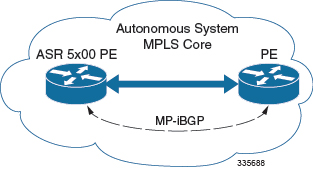

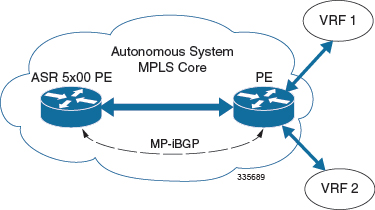

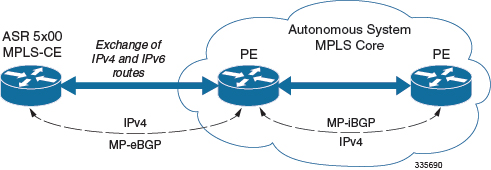

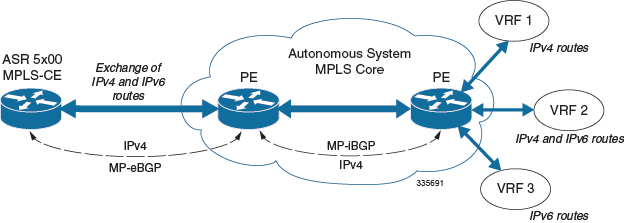
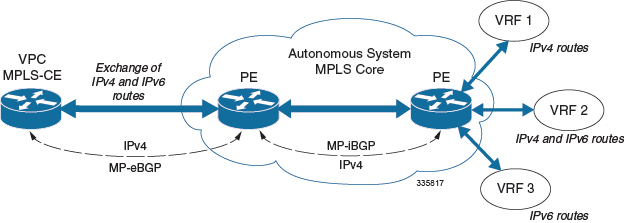
 Feedback
Feedback